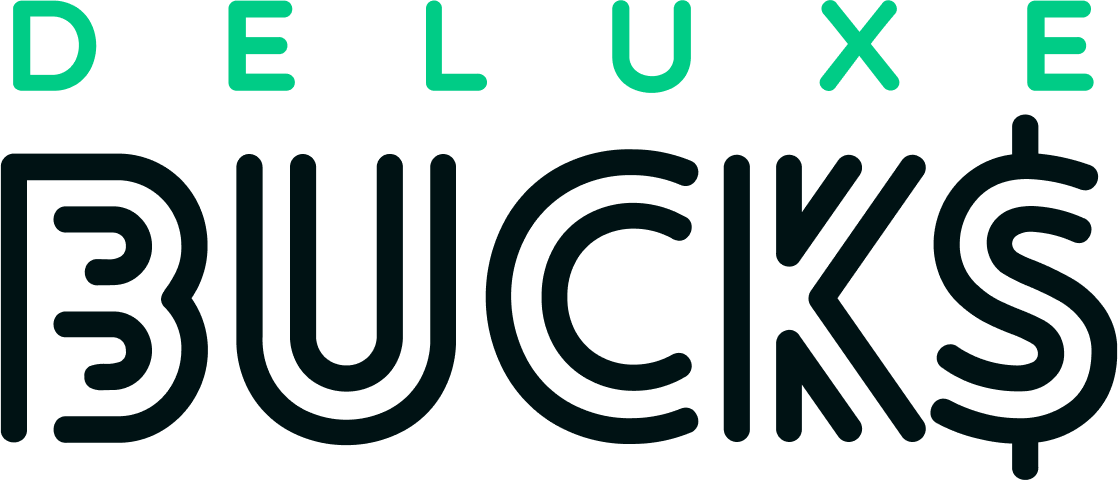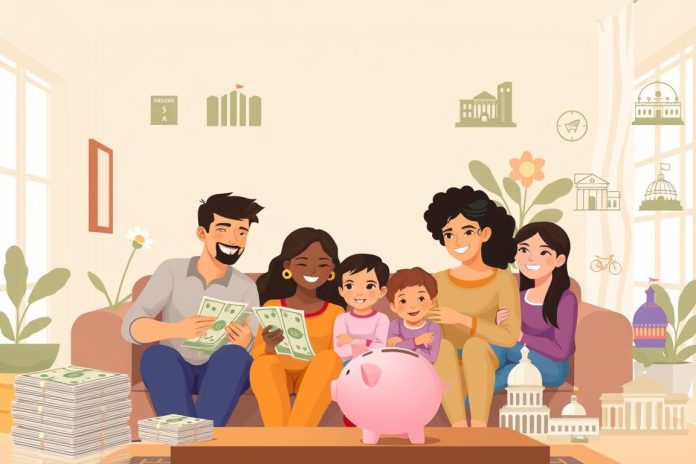As dawn breaks, the Jones family gathers at the kitchen table, surrounded by bills and expenses. The pandemic’s financial impact feels heavy. Yet, they find hope in government aid designed to support families in tough times. Today, let’s look into these vital aid programs. They’ve been lifelines for Americans trying to make ends meet, showing ways to financial stability and growth.
These programs came to life to tackle the global crisis’s impact. They offer help from easing housing pressures to ensuring families have enough to eat. For instance, CalWORKs in California offers monthly help for essentials like housing and food. It makes sure families’ basic needs are not only a priority but a promise1. The well-known Supplemental Nutrition Assistance Program (SNAP) helps turn financial aid into healthy meals for families, underlining the secure foundation these programs aim to build2. FEMA’s aid after disasters shows their commitment to help rebuild lives, without limits3.
Key Takeaways
- Government assistance for families extends across various essential living expenses
- Family support programs adapt to specific needs, including food, shelter, and childcare
- Eligibility for financial aid can often be conveniently assessed and applied for online
- Programs are in place for emergency situations, offering direct services without financial caps
- Families invested in maintaining stability post-disaster receive targeted aid with conditions to secure long-term resilience
- Local and federal government benefits for families are accessible through various dedicated platforms and helplines
Understanding Federal Financial Aid for Families
Exploring federal financial aid is key for low-income families and single parents. These programs aim to lessen the financial load and open doors for the next generation.
An Overview of Economic Impact Payments
Economic Impact Payments swiftly provided financial aid to many during tough times. These funds are best used for necessary expenses or saving for education. They aimed to boost the economy and directly assist low-income families during the COVID-19 crisis4.
The Role of Unemployment Compensation During COVID-19
The American Rescue Plan broadened unemployment benefits to help those who lost jobs during the pandemic. It extended benefits and waived taxes for some, showing how the government helps families in need during crises4.
Maximizing Benefits Through the Child Tax Credit
The Child Tax Credit was increased to aid families with children. It helps with the high cost of living and education4. This shows financial strategies can greatly aid single parents and guardians.
Navigating the Emergency Rental Assistance Program
The Emergency Rental Assistance Program helps with rent for those affected by the pandemic4. It highlights the need for stable living conditions for family well-being. This is part of efforts to support low-income families.
Engaging with these programs can reduce financial stress and lead to stability. Early planning can help families use these benefits to thrive.
State-Specific Support Systems for Struggling Families
In the U.S., many struggle with financial uncertainty. It’s vital to highlight state-specific programs aimed at helping those in need. These programs are a safety net for families, ensuring they can meet basic needs and start over after tough times. They provide aid for foster families and improve family welfare services, showing commitment to the most vulnerable in our society.
Temporary Assistance for Needy Families (TANF)
The TANF program, funded by the federal government, could be what you need to get back on your feet. It offers time-limited cash help for low-income families who qualify4. This assistance is a lifeline, giving people room to breathe financially as they look for stable jobs and move towards financial freedom.
Accessing Low Income Home Energy Assistance Program (LIHEAP)
Dealing with extreme weather shouldn’t be a worry for anyone. LIHEAP helps by providing assistance with home energy costs and weatherproofing4. The program ensures your home is a safe, warm place, no matter the weather.
WIC: Vital Nutrition Support for Women, Infants, and Children
Hunger or poor nutrition shouldn’t be an issue for any child. WIC is a key partner, offering nutrition education and healthy food vouchers to low-income women, new mothers, and young children4. It’s not just help; it’s an investment in the future health and minds of our children.
Supplemental Nutrition Assistance Program (SNAP) Explained
SNAP dreams of a world where all families can eat healthily. It provides crucial food assistance to those in need4. Working with various partners, SNAP makes nutritious food a right, not a privilege. Along with school meals and the Child and Adult Care Food Program, it fights hunger and supports balanced diets for kids4.
For children with disabilities, the SSI for Children program offers financial help. It guides families through SSI’s complexities, including figuring out disability4. Local social service agencies are ready to help you find and use these aids, ensuring our community fights together against tough times.
FAQ
What types of government assistance for families are available today?
How can I access resources for struggling families and help for low-income families?
Are there specific government benefits for families dealing with unemployment due to COVID-19?
What support exists for housing costs through the Emergency Rental Assistance Program?
How can families maximize their benefits through the Child Tax Credit?
What is the role of Temporary Assistance for Needy Families (TANF) in supporting families?
Can energy costs be subsidized for low-income families?
What assistance is offered to pregnant women and young children through WIC?
How does the Supplemental Nutrition Assistance Program (SNAP) help families?
Is there support available specifically for foster families and children with disabilities?
Source Links
- California Work Opportunity and Responsibility to Kids
(CalWORKs) – https://www.cdss.ca.gov/calworks - I need help paying my bills – http://www.211.org/get-help/i-need-help-paying-my-bills
- Individuals and Households Program – https://www.fema.gov/fact-sheet/individuals-and-households-program
- Financial Assistance for Families | Childcare.gov – https://childcare.gov/consumer-education/financial-assistance-for-families


